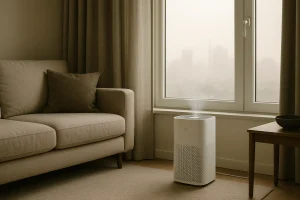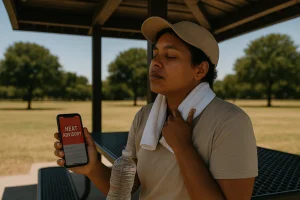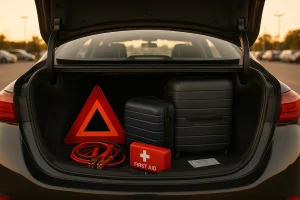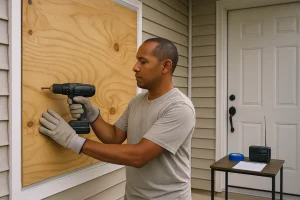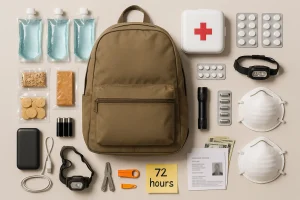Hurricane Preparedness Checklist 2025: Essential Safety Steps Before, During & After
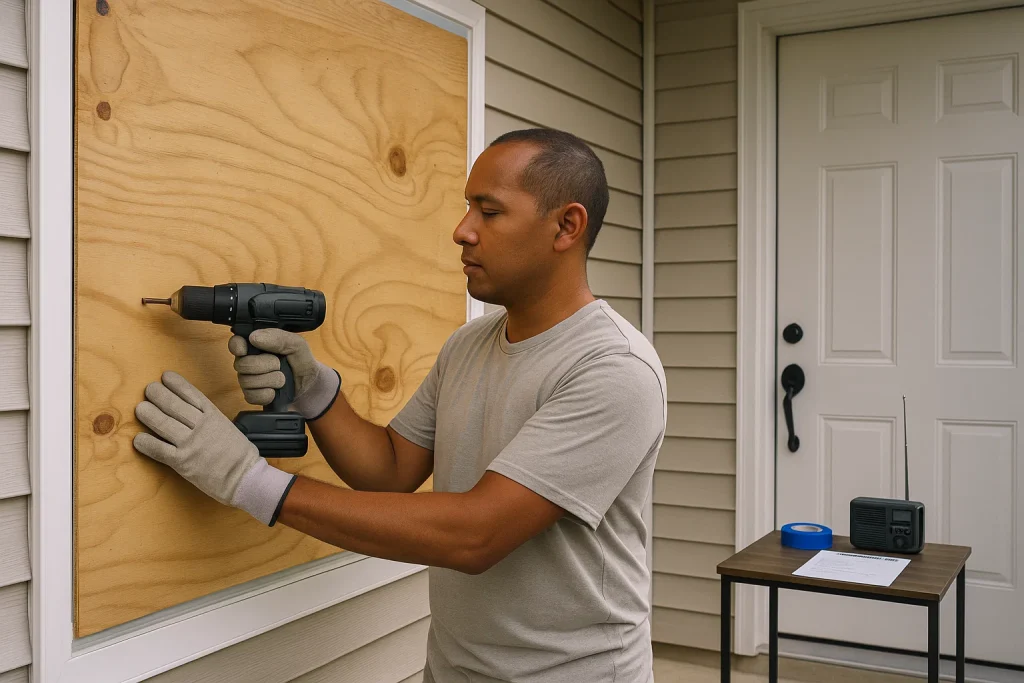
Boarding a window before a hurricane; safety-first prep with tools ready.
Quick Steps

Before: Know your evacuation zone, make a plan, build a 3–7 day kit (water 1 gal/person/day), secure home, back up data.
During: Follow local orders; shelter away from glass; avoid floodwater.
After: Treat downed lines as live; run generators outside; check food safety; document damage.
This hurricane preparedness checklist gives clear, evidence-based steps for 2025. It follows guidance from Ready.gov, the National Hurricane Center, FEMA, the American Red Cross, and the CDC. Use the **hurricane preparedness checklist** now—before watches and warnings—to make fast, safe choices.
Hurricane Preparedness Checklist: Know Your Risk
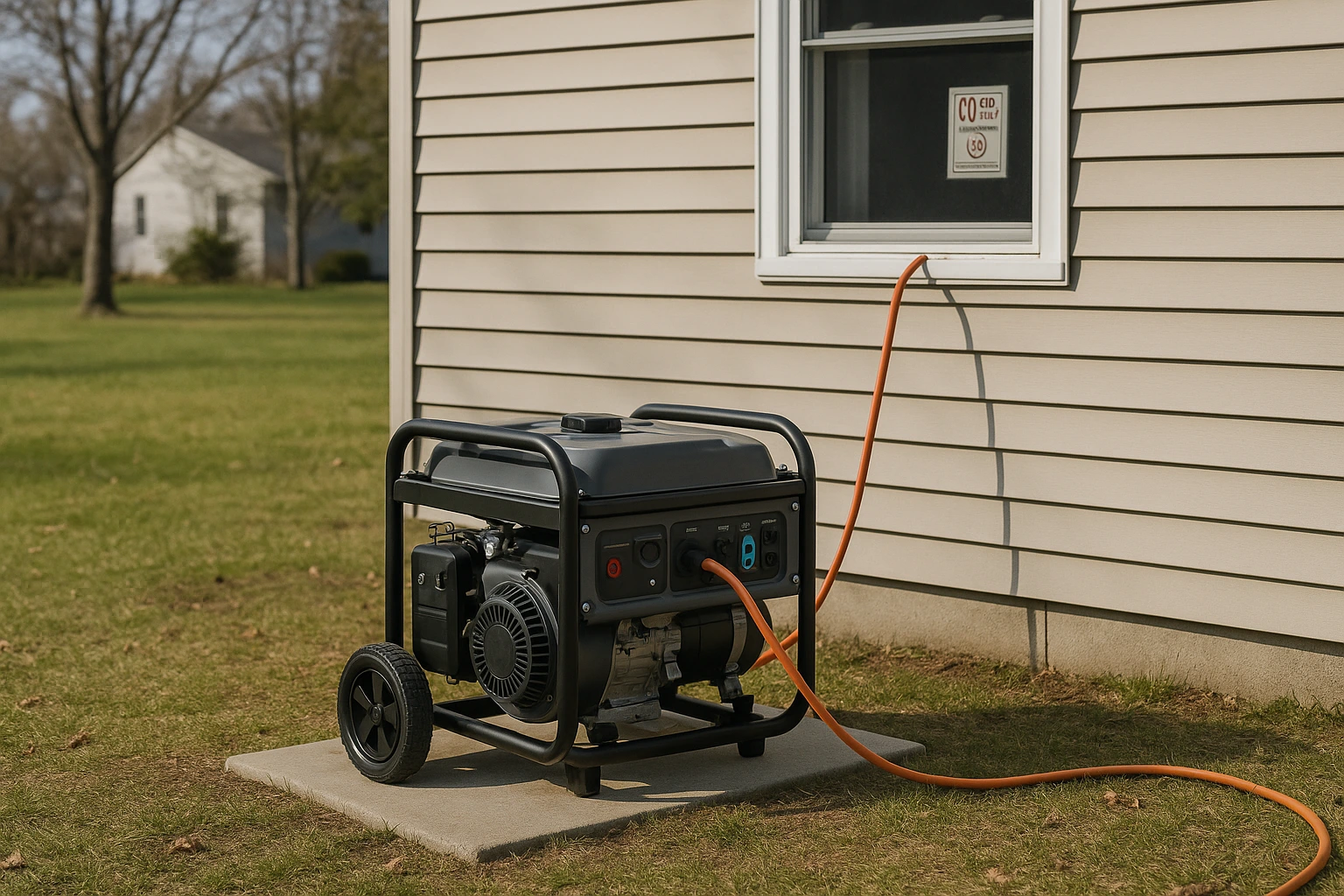
Hurricanes bring wind, water, and long power outages. Most injuries happen from debris, downed lines, carbon monoxide, and post-storm hazards. The timing matters: systems can strengthen quickly. Turn on local alerts, follow your city/county emergency office, and check the National Hurricane Center when storms form.
- Find your evacuation zone and flood risk on your city/county site.
- Save key numbers; add your utility outage page; bookmark your local NWS office.
- Know the difference: Watch (possible, ~48h) vs. Warning (expected, ~36h).
Hurricane Preparedness Checklist: Build Your Kit (3–7 Days)
Use this hurricane preparedness checklist to organize and double-check your supplies. Plan for at least 3 days; a full week is better in many areas.
- Water: 1 gallon (3.8 L) per person per day for drinking and sanitation. Add for heat, nursing, pets, and medical needs.
- Food: Shelf-stable items you will actually eat (beans, tuna, nut butters, oats, shelf-stable milk, bars). Include a manual can opener.
- Medications: 7–14 days of prescriptions; copies of scripts; medical devices and chargers; glasses/contacts.
- First aid: Bandages, gauze, tape, antiseptic, pain relievers, antihistamines, tweezers, gloves.
- Lights & power: Headlamps/flashlights; extra batteries; power banks; car charger; a battery/hand-crank NOAA Weather Radio.
- Hygiene & sanitation: Soap, hand sanitizer, wipes, trash bags, toilet paper, heavy-duty cleaning gloves, contractor bags.
- Protection & clothing: Work gloves, sturdy shoes, rain gear, hats, sunscreen, insect repellent, masks (N95/KN95 for mold/dust).
- Documents & cash: Waterproof pouch with IDs, insurance, prescriptions, contacts; $50–$200 in small bills.
- Tools: Multi-tool, duct tape, plastic sheeting, zip ties, bungees, whistle, printed phone numbers.
- Special needs: Baby formula/diapers, mobility aids, hearing/vision items, pet food/carriers, cooling for heat-sensitive meds.
Hurricane Preparedness Checklist: Harden Your Home
- Windows/doors: Install shutters or pre-cut, labeled plywood. Reinforce garage doors.
- Outdoor hazards: Trim trees; bring in or secure furniture, grills, trash cans, and decorations.
- Water management: Clear gutters and drains; test sump pumps; consider back-flow valves if you flood often.
- Flood prep: Elevate valuables and electronics; move cars to higher ground; protect critical outlets and appliances.
- Power & data: Charge power banks; fill vehicles; back up phones and laptops to the cloud; print key contacts and maps.
- Utilities: Know how to safely shut off gas, water, and main power—only if told by officials or if there’s a clear hazard.
Hurricane Preparedness Checklist: Evacuate or Shelter
Following the hurricane preparedness checklist makes the leave-or-stay decision simpler. If your home is in a surge zone, a mobile home, or otherwise unsafe—or if officials order it—evacuate early. Set a destination now: family/friend out of zone, hotel on higher ground, or public shelter (check pet rules). If sheltering in place, choose an interior, windowless room on a low floor that is not flood-prone.
Hurricane Preparedness Checklist: During the Storm
Keep this hurricane preparedness checklist visible so everyone knows the next step.
- Stay inside and away from windows; interior rooms/hallways are safer.
- Never walk or drive through floodwater. Six inches can knock you over; one foot can move a car.
- Keep the fridge/freezer closed to hold cold. Use coolers and frozen water jugs if available.
- Conserve phone battery; text instead of calling; use a radio for local updates.
Hurricane Preparedness Checklist: After the Storm
Recovery has hidden dangers. Follow the hurricane preparedness checklist as you re-enter and clean up.
- Downed lines: Treat all wires as live. Report hazards to your utility and call 911 if life-threatening.
- Generator safety: Run outside, far from doors/windows/vents; never in garages or on porches. Use CO alarms.
- Food safety: A closed refrigerator keeps safe temps for about 4 hours; a full freezer ≈48 hours, half-full ≈24 hours. Discard perishables above 40°F/4°C for more than 2 hours.
- Water: Follow boil-water notices; disinfect with unscented household bleach only if advised.
- Insurance: Photograph damage before moving items; keep receipts; contact your insurer ASAP.
- Cleanup: Wear gloves, boots, and masks; ventilate; treat all wet materials as possibly contaminated; address mold quickly.
Forecasts, Watches, & Warnings (Know the Language)
Check the National Hurricane Center and your local NWS office. Here’s the short version:
| Alert | Meaning | Lead Time | Your Action |
|---|---|---|---|
| Tropical Storm/Hurricane Watch | Conditions possible | ~48 hours | Top up supplies; prepare to evacuate; secure home |
| Tropical Storm/Hurricane Warning | Conditions expected | ~36 hours | Complete prep; evacuate if told; shelter if staying |
| Storm Surge Watch/Warning | Dangerous coastal inundation risk | ~48–36 hours | Leave surge zones; move vehicles to higher ground |
Power Outages & Generator Safety (Read This Twice)
- Place generators outside, downwind, and at least 20 feet from doors/windows/vents. Carbon monoxide is odorless and deadly.
- Use outdoor-rated cords; never back-feed a house; install a transfer switch to power circuits safely.
- Store fuel in approved containers, away from living areas; cool the generator before refueling.
- Prioritize medical devices and refrigeration. Consider small battery stations for phones and lights.
Water, Sanitation, & Health
- Water needs: Minimum 1 gallon/person/day. Double in high heat, illness, or for babies and older adults.
- Safe water: If advised, boil 1 minute (3 minutes above 6,500 ft) or disinfect per local guidance.
- Hygiene: Handwashing prevents infection during cleanup. Use alcohol-based sanitizer when water is limited.
- Mold: Dry wet materials within 24–48 hours. Wear an N95/respirator during mold cleanup; discard porous items that stay wet.
Documents, Money, & Digital Prep
- Make photo/video inventory of rooms and key valuables; store in the cloud + an external drive.
- Scan IDs, insurance, titles, medical summaries, and prescriptions; keep in a waterproof pouch and in the cloud.
- Keep small bills for cash-only situations; ATMs and card systems can be offline.
- Download offline maps; print routes; write down key contacts in case phones die.
Communication Plan (So Everyone Knows What to Do)
This hurricane preparedness checklist works best when everyone knows their role.
- Pick two meeting places: nearby and out-of-area.
- Share an out-of-state contact who can relay messages.
- Assign roles: meds, pets, documents, power banks, shutoffs.
- Plan two evacuation routes; keep the tank at least half full during the season.
- Run a 10-minute drill; fix gaps you find.
Special Situations: Pets, Older Adults, Disabilities, High-Rises, Mobile Homes
- Pets: Pack carriers/leashes, food/water, vaccination records, and a recent photo. Many shelters require proof of vaccines.
- Older adults/disabilities: Keep medication lists, mobility aids, spare batteries/chargers, and caregiver contacts ready.
- High-rise apartments: Interior hallways may be safer; elevators can fail—have a stair plan.
- Mobile homes: Evacuate to a sturdier structure; high winds can be catastrophic.
Regional Notes (Gulf, Atlantic, Inland)
Use this hurricane preparedness checklist with local context in mind.
- Coastal surge zones: Evacuate early; surge is a top killer. Move vehicles to higher ground.
- Inland flooding: Rain bands can cause flash flooding far from the coast. Prepare for prolonged power outages and road closures.
- Barrier islands: Evacuation routes can close quickly. Leave when local officials recommend—not when everyone else goes.
Myths to Ignore
- “Crack a window to equalize pressure.” No. That increases flying-glass risk.
- “The eye passed—storm is over.” The back side can be worse. Wait for the all-clear.
- “Candles are fine during outages.” Open flames + shifting oxygen = fire risk. Use flashlights instead.
Printable Hurricane Preparedness Checklist
Print this hurricane preparedness checklist and keep it with your kit.
- Before: Alerts on; evacuation zone known; family/pet plan; kit stocked (3–7 days); shutters/plywood ready; yard secured; gutters clear; vehicles fueled; data backed up; cash + documents ready.
- During: Follow orders; shelter in interior room; avoid floodwater; keep fridge/freezer closed; monitor NOAA/NWS.
- After: Treat downed lines as live; generator outside; food safety checks; follow boil-water notices; photograph damage; call insurer; clean with PPE; check on neighbors.
FAQs
How much water should I store? Start with 1 gallon (3.8 L) per person per day for at least 3 days; double for heat, babies, and medical needs. Pets need extra. This hurricane preparedness checklist uses that baseline.
What foods work best? Ready-to-eat cans/pouches, nut butters, dried fruit, shelf-stable milk, oats, and energy bars—things you already eat so rotation is easy.
Where should I shelter at home? In an interior, windowless room on a low floor that is not flood-prone; away from exterior walls and glass.
How far from the house should I run a generator? Outside and well away from doors, windows, and vents—aim for 20+ feet—and never in a garage or carport. Use CO alarms.
How do I keep food safe without power? Keep the fridge closed (≈4 hours safe). A full freezer ≈48 hours; half-full ≈24 hours. Discard perishables above 40°F/4°C for more than 2 hours.
Do I need flood insurance? Many homeowner policies exclude flood damage. Ask your agent about the NFIP and any waiting periods.
Helpful Links
- Ready.gov – Hurricanes
- National Hurricane Center – NOAA
- National Weather Service – Local Forecasts
- American Red Cross – Hurricane Safety
- CDC – Food Safety After Emergencies
- EPA – Carbon Monoxide (Generator) Safety
Related Guides on FightState
- Emergency Go-Bag: 72-Hour Essentials
- Heat Advisory: Signs & What To Do Now
- Wildfire Smoke: HEPA & Masks (Guide)
- Labor Day Travel Safety (2025)
Educational only; not medical or legal advice. Follow official orders; call 911 (or your local number) for emergencies.
By following this hurricane preparedness checklist, families can act early, stay safer during the storm, and recover faster after it.

